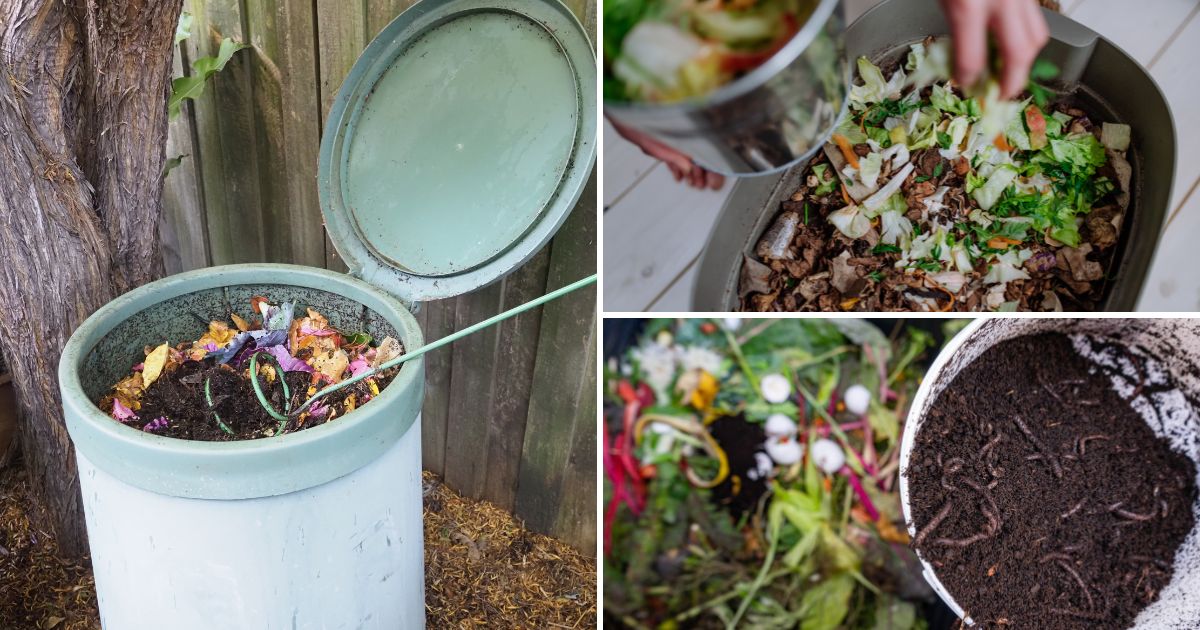
Vermicomposting turns your kitchen and garden scraps into gold—well, black gold, to be exact! However, setting up a worm bin and getting it right isn’t as straightforward as it might seem.
A common blunder, like overfeeding your worms, is just the beginning. From choosing the wrong ratio of worms to waste to letting your bin turn anaerobic, there’s a host of pitfalls that could lead to a smelly, soggy, and bug-ridden mess.
It’s easy to make these mistakes, but being aware of them can significantly improve your composting success. No need to worry, though—I’m here to help you navigate these common pitfalls.
In this blog post, I’ll uncover the top five vermicomposting mistakes. Even better, I’ll provide practical tips to help you avoid them, ensuring that your worm bin does more than just survive—it thrives, providing you with the best possible compost for your garden.
Let’s get started and turn those scraps into garden treasure!
What is Vermicomposting?
Vermicomposting is essentially throwing a feast for worms to break down your organic kitchen leftovers. Picture a snug bin where these lively wigglers munch on potato peels, eggshells, and coffee grounds. Watch as they work their magic, transforming everyday throwaways into rich, dark compost filled with nutrients like nitrogen, phosphorus, and potassium, along with beneficial microorganisms that enhance soil health.
But there’s more to it than just compost. The process also produces “worm juice,” a nutrient-packed liquid that collects at the bottom of your bin. This liquid gold can be used as a concentrated fertilizer, giving seedlings and vegetable transplants in your garden or plot a substantial growth boost.
Here’s the best part: vermicomposting is more than just beneficial for your plants; it’s a win for the environment too. Your kitchen scraps gain a second life as a free, natural fertilizer, cutting down on CO2 emissions that would have come from burning them. Engaging in this simple, year-round activity reduces waste and contributes positively to the environment. Plus, it’s hard to beat the satisfaction of turning less trash into more garden treasure!
Choosing the Wrong Type of Worms
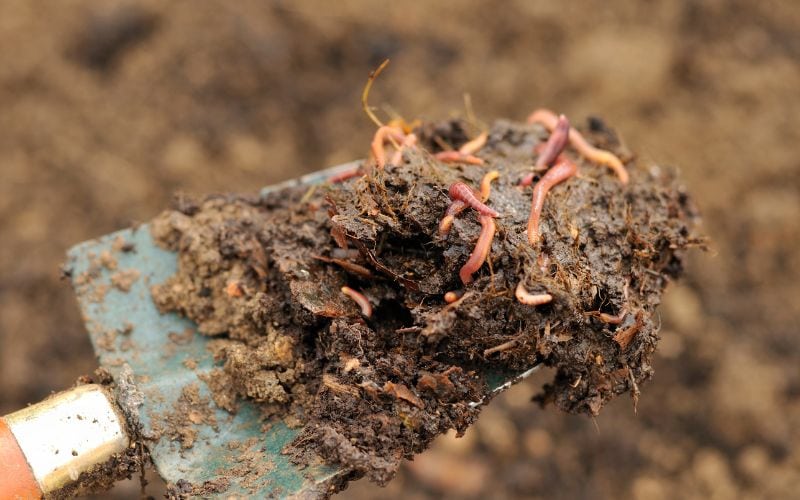
Choosing the right worms is key in vermicomposting. Not all worms are up to the task. You can’t just toss any earthworm into your compost bin and expect them to perform. That would be like asking me to win a marathon without training—a definite no-go!
The MVPs of composting are the red wigglers, Eisenia foetida, along with their cousins, the Eisenia andrei. These worms excel because they prefer to live near the surface, making them ideal for compost bins. They stay where the food is, efficiently breaking down your scraps.
Why do I keep a mix of both types in my bin? Here’s the lowdown on why they’re the perfect duo:
| Trait | Benefit in Vermicomposting |
|---|---|
| Surface dwelling | Avoids deep burrowing, making them ideal for bin environments. |
| Rapid waste digestion | Can consume roughly half their weight in waste daily. |
| High density living | Can thrive in close quarters, just perfect for compost bins. |
By avoiding the wrong type of worms, you dodge a major composting mishap. Trust me, the last thing you want is a bin full of worms that prefer hide-and-seek over snacking on your scraps. Stick with these vermiculture stars, and your compost bin will be as lively and productive as a beehive—minus the sting, of course!
Not Balancing Organic Waste Intake
Managing the balance of organic waste in your vermicompost bin is crucial. I always remind myself that worms need a balanced diet of greens and browns—much like us, they thrive on variety. Aim for an even mix: about half nitrogen-rich “greens” such as vegetable scraps, fruit remnants, and coffee grounds, and half carbon-heavy “browns” like shredded paper and dried leaves.
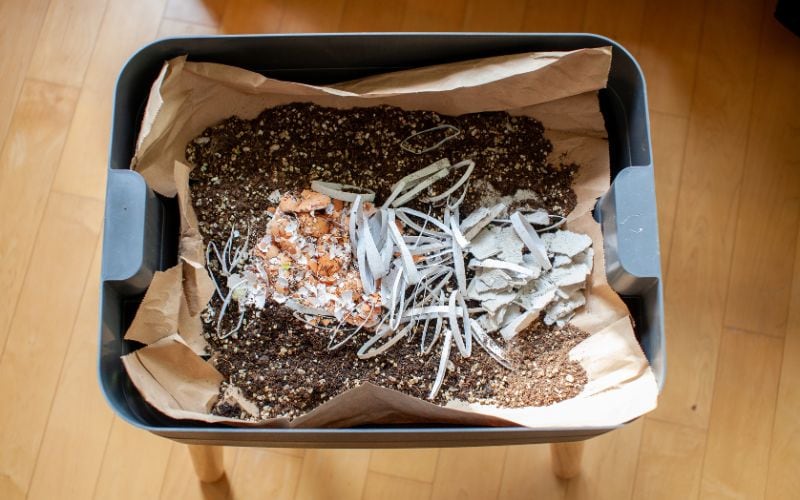
If you lean too heavily on greens, the bin can quickly become soggy and smelly. It’s akin to a party that only serves desserts: delightful initially, but soon everyone’s feeling a little off. Conversely, an excess of browns might slow down the composting process, much like a party running out of food.
Rule of Thumb for Feeding Your Worms:
- 50% greens (nitrogen)
- 50% browns (carbon)
Keep an eye on the balance. If the compost gets too damp or starts to smell, it’s a signal to add more browns. Maintaining a neutral pH around 7 keeps the worms content. If the compost becomes too acidic, tossing in a handful of eggshells can neutralize it, creating a perfect environment for your worms.
Regarding worm wellness, steer clear of dairy, meat, garlic and onions —these are a no-go for worms. By avoiding such items, you ensure a harmonious ecosystem in your bin, allowing your worms to flourish effortlessly.
Don’t Worry About Humidity and Ventilation
When I started vermicomposting, I quickly realized the importance of monitoring humidity and ventilation. It’s a lot like ensuring your pet is hydrated without being submerged! Worms need a moist environment, ideally like a damp sponge at 75-85% humidity. If their bedding dries out, they become sluggish and your compost suffers.
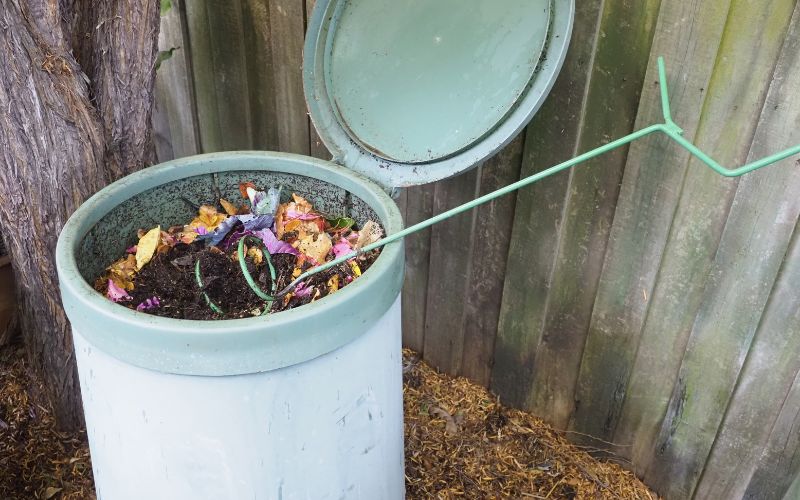
Here’s a quick fix! If your bin is too dry, just mist some water over it. If it feels too wet, like a swamp, add dry materials such as shredded paper or cardboard to soak up the excess moisture. Adjusting the moisture level is that simple. Ventilation is equally important. Think of it as needing a breeze in a stuffy room; without it, you’ll get bad odors and unwanted gases. To ensure good air flow, I position my worm bin in a spot with natural air movement, or sometimes leave it partially open for some fresh air.
Always remember, the comfort of your worms is key—they’re the main characters in your vermicomposting story. With a bit of care in these areas, you’re all set for a thriving worm bin and top-notch compost!
Expose the Worm Composter to Heat or Cold
Worm composting thrives within a specific temperature spectrum, usually around 15°C to 25°C. If I’m not careful, exposing my little worm buddies to harsh conditions can spell trouble. They’re just not cut out for the blazing sunshine or the frozen tundra!
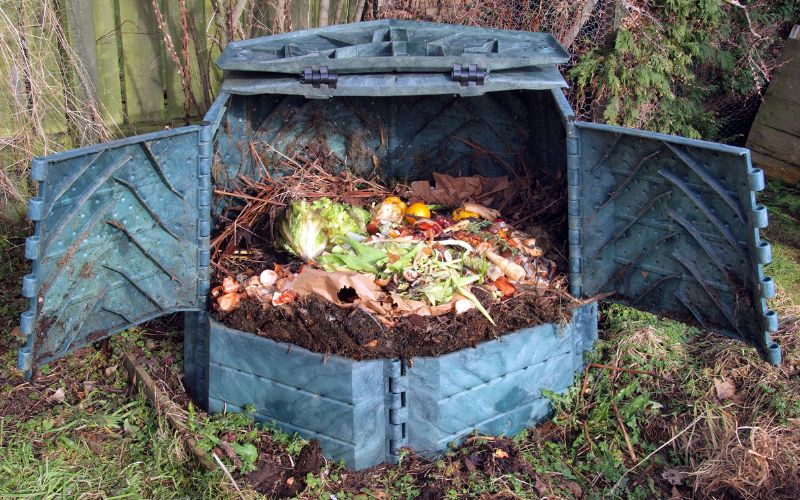
During the steamy months, it’s all about keeping things cool. Shade is the name of the game, and I always make sure my vermicomposter isn’t basking in direct sunlight. I’ll even throw in a bit of extra ventilation to keep the air moving. Heat can cause my worms to dehydrate quicker than a sponge in the desert, and I certainly don’t want that.
On the flip side, when the winter winds blow, I’m the worms’ guardian against the biting cold. Insulation becomes super important, and sometimes I’ll shift the composter to a garage or shed to fend off Jack Frost. Frozen worms? No, thank you!
Here’s a brisk summary to keep your worm family safe:
- Hot Weather Habits:
- Shade: essential.
- Ventilation: very important.
- Monitor moisture: worms need their environment damp, not bone-dry.
- Chilly Season Strategies:
- Insulation: key for warmth.
- Indoor relocation: if it’s freezing outside, consider moving it.
Remember, happy worms make for rich compost, and keeping an eye on the thermometer is one way I make sure they stay cheerful!
Forgetting to Monitor its Proper Functioning
Keeping your worm composter on track is like being a backstage manager: you’ve got to keep everything running smoothly to avoid a performance disaster. Here’s how you can keep your show going without a hitch:
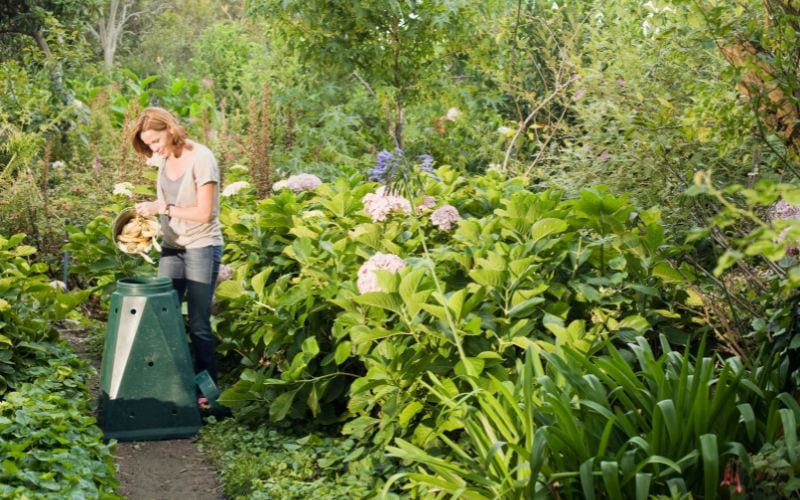
- Empty the tank: Regularly clear out the liquid at the bottom of your composter, affectionately known as vermitea. Think of it as draining a pool before it overflows, keeping conditions just right and preventing an overcrowded worm party.
- Balance the diet: Add a mix of green scraps and brown cardboard or straw. It’s like feeding your guests a balanced meal—too much cake (greens) and they’ll get sluggish; not enough, and they’re left hungry.
- Control portions: Keep an eye on how much you feed those wriggly diners. Overfeeding is like throwing too much wood on a fire—it can get out of control quickly and leave a stinky mess.
Here are a few savvy tips to make sure your vermicomposting adventure is a hit:
- Start Small: Begin with a small worm composter. It’s like learning to ride a bike with training wheels.
- Chop and Add: Gradually add your kitchen waste, cutting it into small pieces. Ensure the bin isn’t too packed—it needs some breathing room!
- Moisture Matters: Keep the compost moist, but not soaked. It’s like keeping a cake just moist enough to be delicious.
- Cool It Down: If the bin gets too warm, mix in some brown materials like dried leaves. It’s like turning on the AC on a hot day.
- Mist Lightly: If the compost looks dry, a gentle mist of water will do. Remember, we’re quenching thirst, not creating a swimming pool.

Written By
Amber Noyes
Amber Noyes was born and raised in a suburban California town, San Mateo. She holds a master’s degree in horticulture from the University of California as well as a BS in Biology from the University of San Francisco. With experience working on an organic farm, water conservation research, farmers’ markets, and plant nursery, she understands what makes plants thrive and how we can better understand the connection between microclimate and plant health. When she’s not on the land, Amber loves informing people of new ideas/things related to gardening, especially organic gardening, houseplants, and growing plants in a small space.
